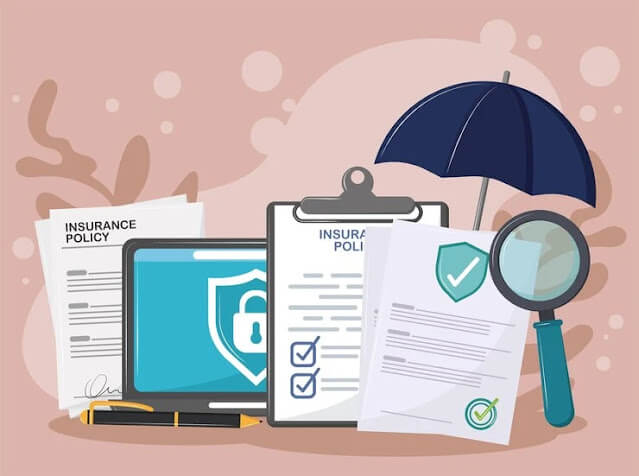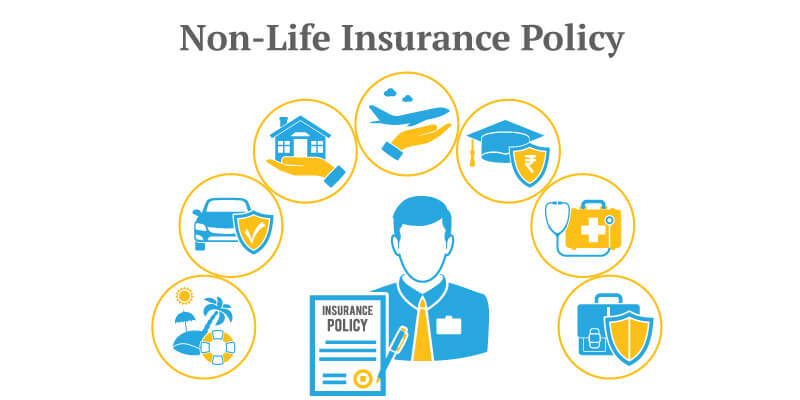Insurance is divided into numerous product types based on the insured object, operational nature, or participation method.
I. Commercial Insurance
There are three types of commercial insurance in the market, including life insurance, non-life insurance, and health insurance:
1. Life Insurance:
Life insurance is a type of insurance for cases where the insured person is alive or deceased. Life insurance includes seven types:
- Endowment Insurance: The distinctive feature of endowment insurance is that the insurance company only pays the insurance money if the insured person is still alive by the agreed-upon deadline in the insurance contract. Endowment insurance serves as a form of savings for the insured to use after the specified time in the insurance contract.
- Term Life Insurance: Under the term life insurance contract, the insurance company must pay the insurance money to the beneficiary if the insured person dies within the agreed-upon period. Unlike whole life insurance, in term life insurance, the insurance company only commits to cover the death event of the insured person within a specified period.
- Whole Life Insurance: Applies to cases where the insured person dies at any time during their lifetime.
- Regular Payment Life Insurance: Applies to cases where the insured person lives up to a certain specified age. Since the premium is paid in installments agreed upon in advance, if the insured person continues to live after the specified period, the regular payment insurance essentially provides coverage for the life of the insured person.
- Retirement Insurance: Applies when the insured person reaches a specified age, and the insurance company pays the insurance money according to the agreement in the insurance contract.
- Investment-Linked Insurance: With this type of insurance participation, the policyholder decides how their insurance premium will be invested by owning units in an investment fund (corresponding to the premium paid). The value that the policyholder receives upon contract maturity is the value of the investment fund units at maturity. Insurance companies offer different investment funds with varying levels of risk, where higher risk entails higher potential profits.
2. Health Insurance
Health insurance is a type of insurance for cases where the insured person is disabled, has an accident, experiences illness, or requires health care, and the insurance company pays according to the agreement in the insurance contract. Health insurance includes three types:
- Personal Accident Insurance: This insurance product covers cases of bodily injury or death due to accidents.
- Health Insurance: Commercial health insurance, also known as non-life insurance health insurance, aims to assist with medical examination and treatment costs when the insured person unfortunately faces the risks of illness, pain, disease, accidents, etc.
- Health Care Insurance: This insurance product supports the cost of treatment and benefits for participants in case of illness, pain, disease, surgery, accidents, pregnancy, etc.
3. Non-Life Insurance:
Non-life insurance helps insure property, civil liability, and other non-life insurance operations. Non-life insurance includes ten types:
- Property and Casualty Insurance: For property objects, including tangible items, money, valuable papers, and property rights.
- Cargo Insurance: For road, sea, inland waterway, rail, and air transportation.
- Aviation Insurance: Specifically for aircraft operations and risks related to air transportation (including goods and people).
- Motor Vehicle Insurance: For motor vehicles to compensate vehicle owners when unfortunate risks occur related to people, the vehicle, or goods on the vehicle. Besides compulsory insurance, vehicle owners may choose to purchase additional voluntary products: Motor vehicle physical damage insurance, driver and passenger accident insurance, and owner’s cargo insurance.
- Fire and Explosion Insurance: For property of insured establishments in case of risks of fire or explosion.
- Hull and Civil Liability of Shipowners Insurance: For the hull, machinery, and equipment of the ship caused by sea/river water and sudden accidents.
- Liability Insurance: For risks related to legal responsibilities or obligations to compensate for damages caused by the mistakes of the insured.
- Credit and Financial Risk Insurance: For loans to help borrowers repay the bank in case of unexpected risks.
- Business Interruption Insurance: For property risks during the production and business activities of an enterprise.
- Agriculture Insurance: For production objects in agriculture, forestry, and aquaculture.

II. State-Implemented Insurance
1. Deposit Insurance
Ensures the refund of deposits for the insured depositor within the insurance payment limit when participating organizations face the inability to pay deposits or bankruptcy. The insurance payment amount is paid for all insured deposits according to regulations (including principal and interest).
2. Health Insurance:
Compulsory health insurance: A mandatory form of insurance applied to certain subjects as regulated by the Health Insurance Law for health care purposes. Monthly contributions from Vietnamese laborers are equal to 8% of the monthly salary/base salary into the retirement and survivorship fund.
Voluntary Social Insurance: A form of social insurance organized by the state where participants choose the contribution amount and payment method that suits their income. The state has policies to support the social insurance premiums, allowing participants to enjoy retirement and survivorship benefits.
Cre: Mono/insureyourcompany.com



